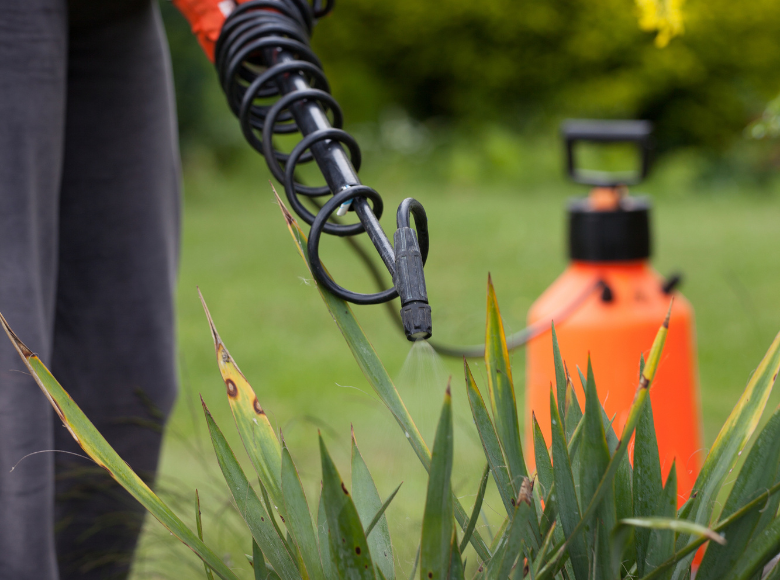The fall period in Florida is not like most parts of the country. The temperatures are similar to summer, and weather conditions typically remain the same until the cooler winter months arrive.
Your lawn begins to react to less intense sunlight and shorter days, however, you may not notice much difference. The grass grows well and stores nutrients for the following months. There is still plenty of rain and the soil is warm.
For this reason, fall is the perfect time to prepare your lawn for the coming months, when freezes and cold snaps are possible. By making your lawn ready now can ensure that it remains healthy and returns fully energetic next spring.
Fertilizing Your Lawn

For best results, a nitrogen-rich, high-potassium fertilizer is recommended for best results.
Needless to say, there is always the possibility of a warm winter with a bit of cold, allowing your grass to continue to grow throughout winter. Hence, it is fine if you do not fertilize in the fall. You can boost up your lawn in the spring.
Given below are some points to remember for fertilizing some more popular grasses.
- St Augustine Grass: Use 6 lbs. And fertilize it by September. for every 1,000 square feet of lawn. Keep your grass at a height of 3-4 inches in these seasons.
- Bahia Grasses: Same as above.
- Zoysia Grasses: Fertilize in September and November. Search for nematodes, which usually damage this grass.
- Bermuda Grasses: Bermuda is generally fertilized the entire year. You must apply fertilizer in fall in the months of September and October
Things you should know before you buy fertilizer for trees and shrubs
If you love nurturing plants, you’ve probably used garden fertilizer to enhance their growth. However, it’s important to understand the basic fertilizing requirements of trees and shrubs in order to choose a product that can match their needs.
Why should you fertilize trees and shrubs?
Fertilizer helps young trees and shrubs to develop strong root systems and green leaves that make them well-established. Applying fertilizer to established shrubs and trees can help restore the soil of consumed nutrients, which plants require for continued health and growth every year.
Which fertilizer for trees and shrubs is best?
Healthy trees and shrubs can make your lawn beautiful throughout each season of the year. Although these plants are generally hardy, they at times need more nutrients to grow. A fertilizer that is especially designed for trees and shrubs can encourage strong growth and an eye-pleasing appearance.
Similar to other types of garden fertilizers, those made for trees and shrubs are available in varying forms and consist of various additives to keep plants looking their best. BioAdvanced Tree and Shrub Plant Food and Fertilizer are formulated with an insecticide that shields plants from many harmful pests.
What is NPK?
Phosphorus, Nitrogen, and Potassium are the major macronutrients in fertilizer and are simply called NPK. Numerous fertilizers have a ratio given on the package to help consumers select the best one for their requirements. For example, a ratio of 3-1-1 means a fertilizer comprises 3% Nitrogen and 1% Phosphorus and Potassium. Some fertilizers also contain a variety of micronutrients that are not incorporated into this equation but are helpful to plants.
While any fertilizer that is designed for trees and shrubs can be applied to these types of plants, you won’t know the right balance of macronutrients to use without testing the soil for an exact breakdown of its nutrient contents.
When should you apply fertilizer to trees and shrubs?

What to look for in a quality fertilizer for trees and shrubs?
1. Tree and shrub formulas
All-purpose fertilizer works for most plants, but formulas that are made especially for trees and shrubs are suitable. It is because they contain macronutrients’ ratios that help these types of plants grow. Fertilizers in this category generally have the words “shrubs and trees” on their packaging.
2. Types of fertilizer
Granular, liquid, and spike are the three most common types of fertilizer, and all are simple to use. While liquid absorbs rapidly and works instantly, some granular formulas that let out nutrients fast are also available. Spike options are slow-release formulas, depositing nutrients slowly over time, and granular fertilizer is available in slow-release formulas, too.
3. Synthetic and natural fertilizer
You can choose between natural or synthetic fertilizers. Synthetic products are produced with chemicals and are effective and fast. Natural options are produced using different organic materials. Although they function slowly compared to synthetic fertilizers, they are also less probable to harm plants.
Cost of fertilizer for trees and shrubs
Quality fertilizer costs as low as $6 for a portion that covers some plants, and as high as $100 or more for multiple trees and shrubs. Products by top manufacturers may cost a little more than less-known brands.
FAQs
1. Where should I apply fertilizer for shrubs and trees?
Apply fertilizer at the base of shrubs and trees. As trees’ root systems spread considerably, apply fertilizer along the dripline, which is the area a little away from the circumference of the branches. Granular fertilizer should be raked into the soil for maximum absorption.
2. Should I apply more fertilizer if I don’t see results after using fertilizer on my trees and shrubs?
Yes. You don’t need to reapply shrub and tree fertilizer in the fall. Although applying a second time in early summer can prove beneficial to an under-nourished plant. To conclude, the aim to fertilize in the fall is to have a healthier, greener, and weed-free lawn. It can provide your lawn with the ability to fight off fungus and weeds, and survive through the Florida winter’s drier months.
Contact Down To Earth’s lawn care experts today if you need professional assistance to fertilize your lawn in the fall and spring.

